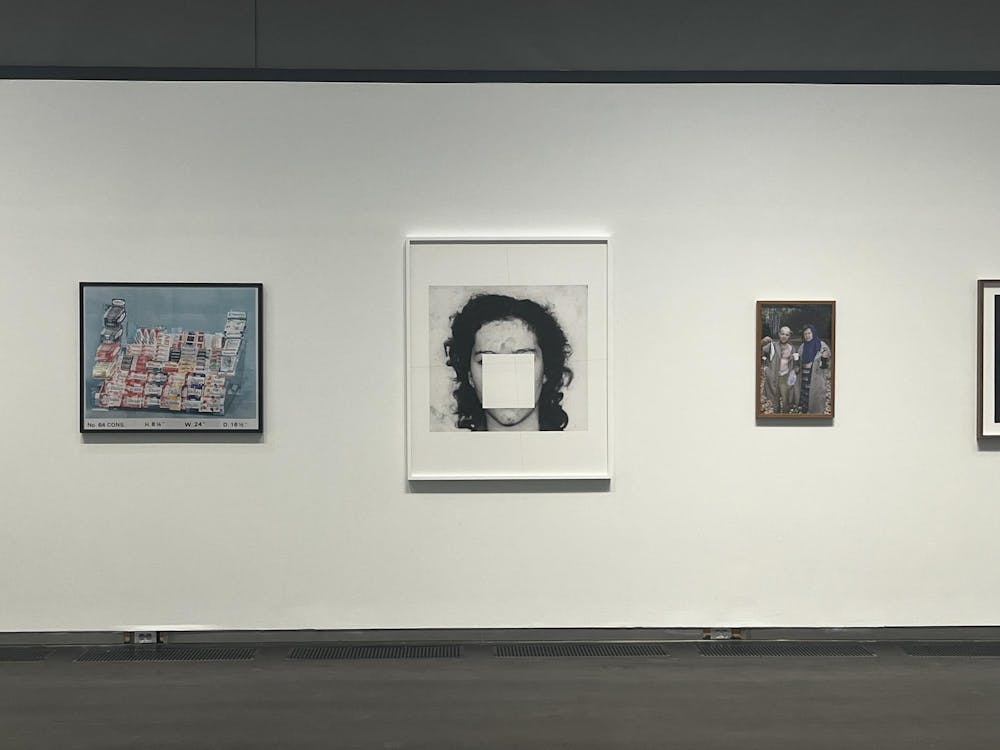The Hurley Gallery was completely silent when I first entered the room. I could only hear the sound of my own footsteps echoing between the walls and through the mostly empty air. Decorating the walls of the gallery were 23 pieces of art, predominantly photographs. The space itself felt barren, with nothing but a couple of benches in the center of the room, allowing the pieces of art to capture the full attention of anyone that enters. Taking up so much space in such a bare room, the art felt overwhelming at first. Yet even if I didn’t fully understand what a photo was trying to convey, I could still appreciate it.
The Hurley Gallery is the latest of exhibitions held by the Lewis Center for the Arts (LCA). This exhibition, titled “Poetic Record: Photography in a Transformed World,” “gathers photo-based artists, writers, curators, historians, and students to explore the poetics of photography, its instability, and its latent potential,” according to the LCA. As I inspected the art, I quickly realized that every piece was unique — no two pieces even slightly resembled one another. Each artist had a different story to tell.
I took my time making my way around the room, looking closely at each photo. At times, all I could do was stand in stunned silence as I tried to absorb the art I was seeing. The standout piece was “They Took the Faces from the Accused and the Dead … (#00638_1_F),” by Trevor Paglen. It is a framed close-up of an individual’s face, but there is a blank square in the middle, removing any distinct facial features or identifying characteristics of the subject. The piece is a part of a larger collection highlighting the use of inmates and deceased individuals in the training of facial recognition software. Paglen’s website says, “In a very real sense, facial recognition software is built upon the faces of the accused and the dead.” As I looked at the photo on display, I couldn’t quite describe what I was feeling, but the cut-out square in the face of an unknown person left me with a sense of sadness.
Another photo that stopped me in my tracks as I explored the gallery was Lieko Shiga’s “Satounara, Sayounara, from Rasen Kaigen.” As I initially walked past the photo, it looked like a zoomed-in shot of an eye with a sparkling pupil in the center. Once I scrutinized it properly, it appeared to be a photo from the perspective of inside the eye. In the center was a group of people waving and smiling towards the viewer. It seemed that the photographer wanted to highlight the idea that “beauty is in the eye of the beholder.”
I could go on about every other piece of art in the exhibition, but I would implore anyone reading this to go experience it for themselves. Allow yourself to take the time to feel the photos and not merely glance at them. Whether you want to spend ten seconds or two hours inspecting and appreciating the work on display, none of the time you spend there will be wasted. You will walk out feeling an intrigued, emotive sentiment — fulfilling the exact purpose of art.
If you want to experience this artwork in discussion with others, Lewis Center for the Arts is hosting the opening reception of the exhibition on Thursday, Oct. 10, 5–6:30 PM in the Hurley Gallery. The exhibition will be open until Dec. 5.
Mackenzie Hollingsworth is an assistant editor for The Prospect. She is a member of the Class of 2026 and can be reached at mh5273[at]princeton.edu.








